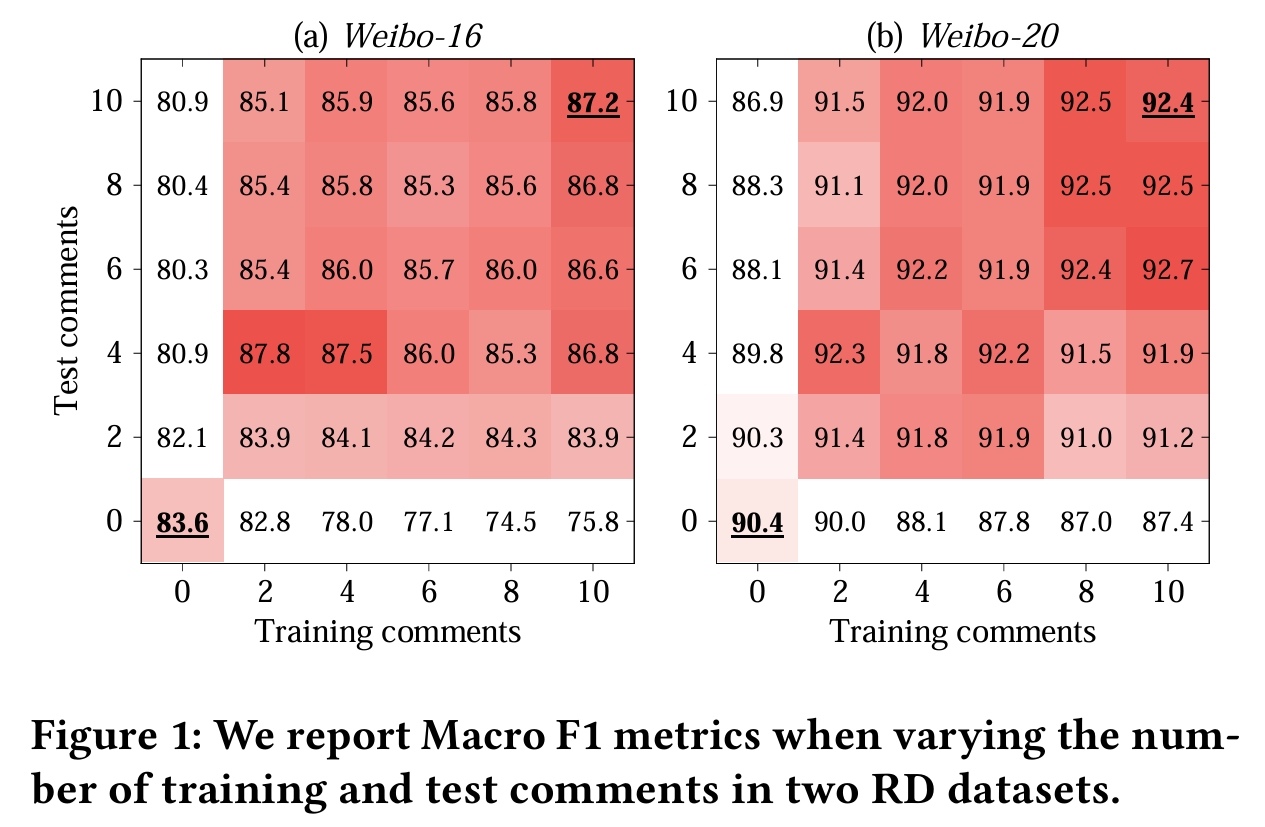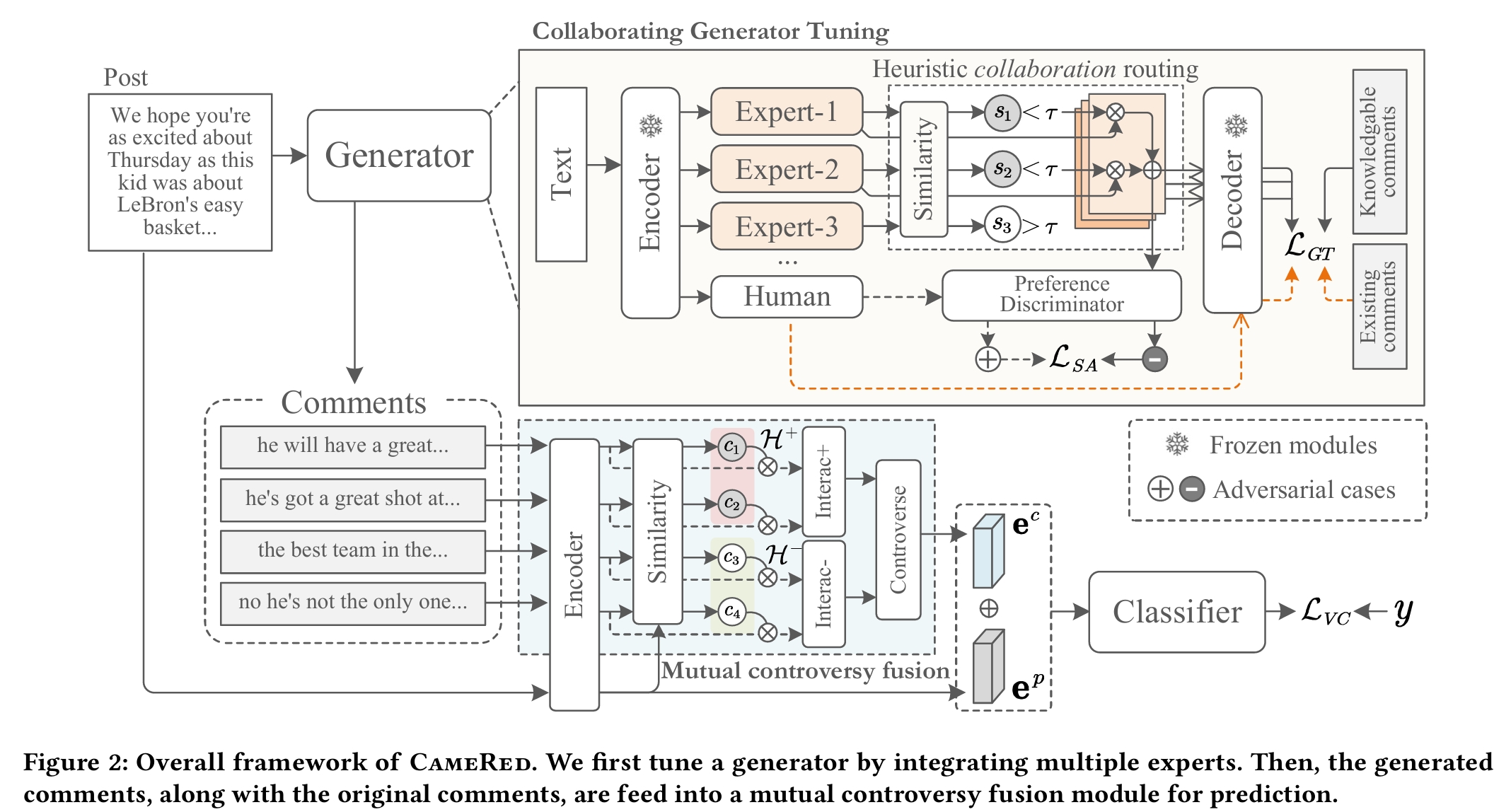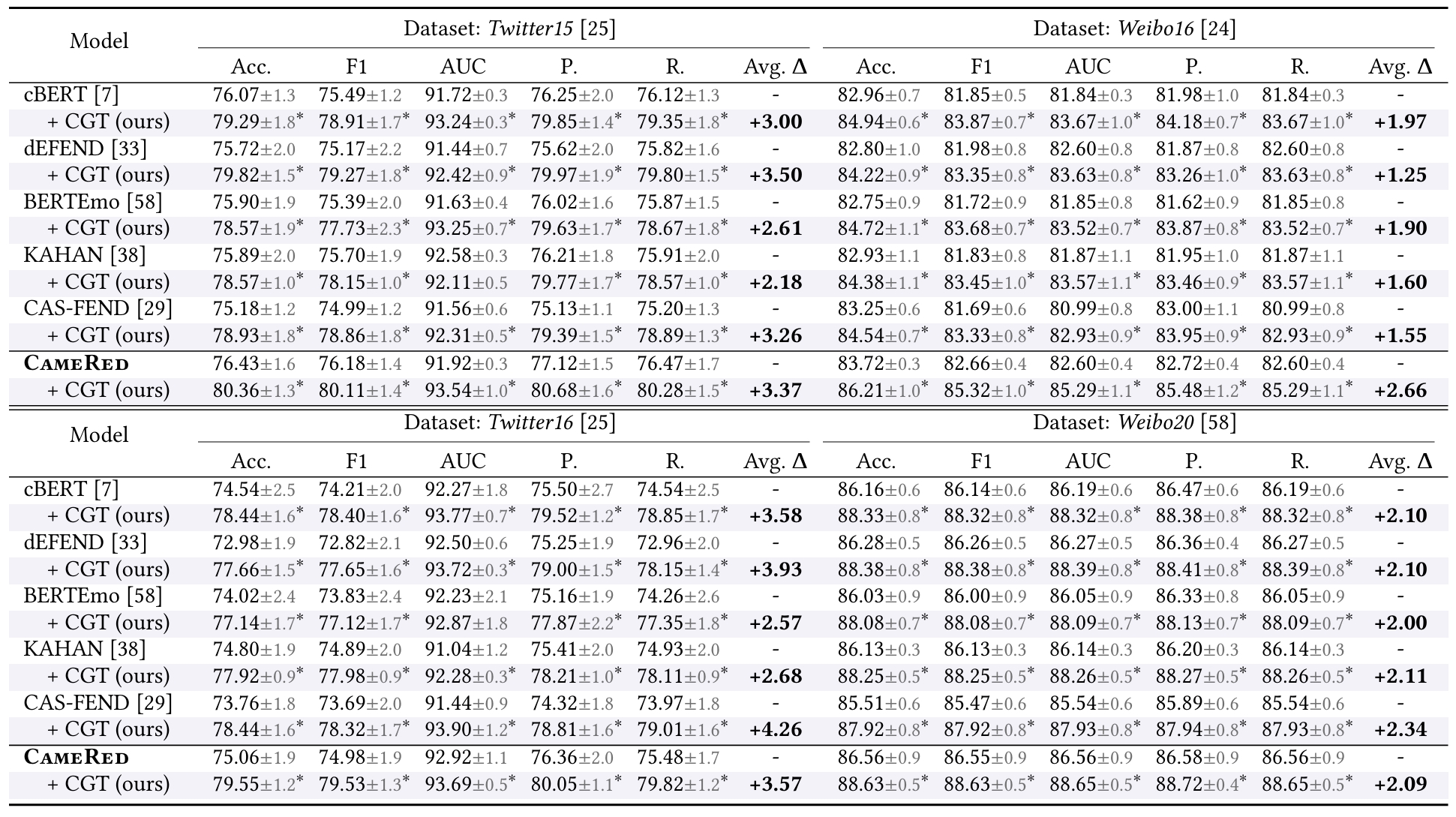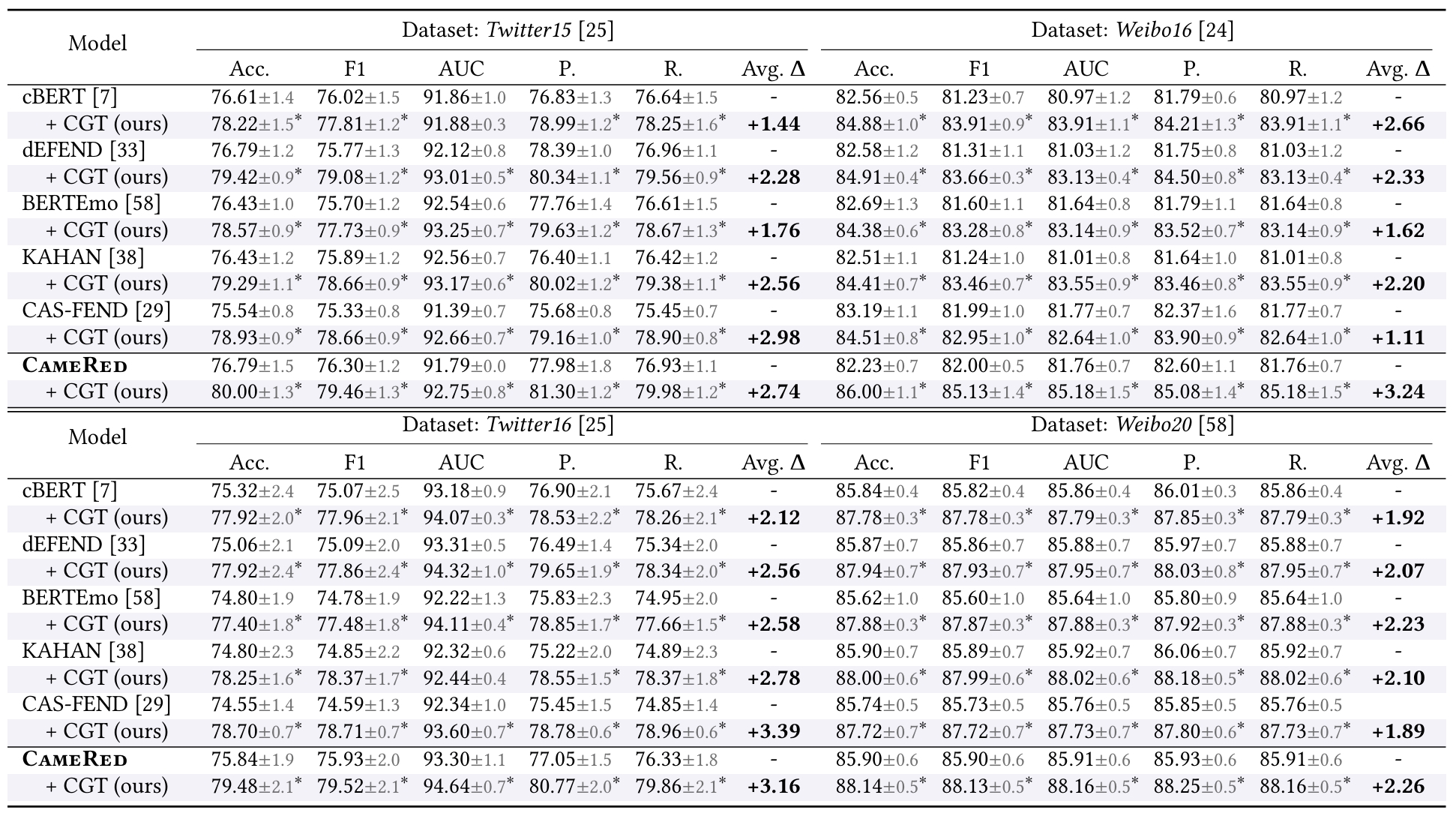Over the past decade, social media platforms have been key in spreading rumors, leading to significant negative impacts. To counter this, the community has developed various Rumor Detection (RD) algorithms to automatically identify them using user comments as evidence. However, these RD methods often fail in the early stages of rumor propagation when only limited user comments are available, leading the community to focus on a more challenging topic named Rumor Early Detection (RED).
Typically, existing RED methods learn from limited semantics in early comments. However, our preliminary experiment reveals that the RED models always perform best when the number of training and test comments is consistent and extensive. This inspires us to address the RED issue by generating more human-like comments to support this hypothesis. To implement this idea, we tune a comment generator by simulating expert collaboration and controversy and propose a new RED framework named CAMERED. Specifically, we integrate a mixture-of-expert structure into a generative language model and present a novel routing network for expert collaboration. Additionally, we synthesize a knowledgeable dataset and design an adversarial learning strategy to align the style of generated comments with real-world comments. We further integrate generated and original comments with a mutual controversy fusion module. Experimental results show that CAMERED outperforms state-of-the-art RED baseline models and generation methods, demonstrating its effectiveness.






